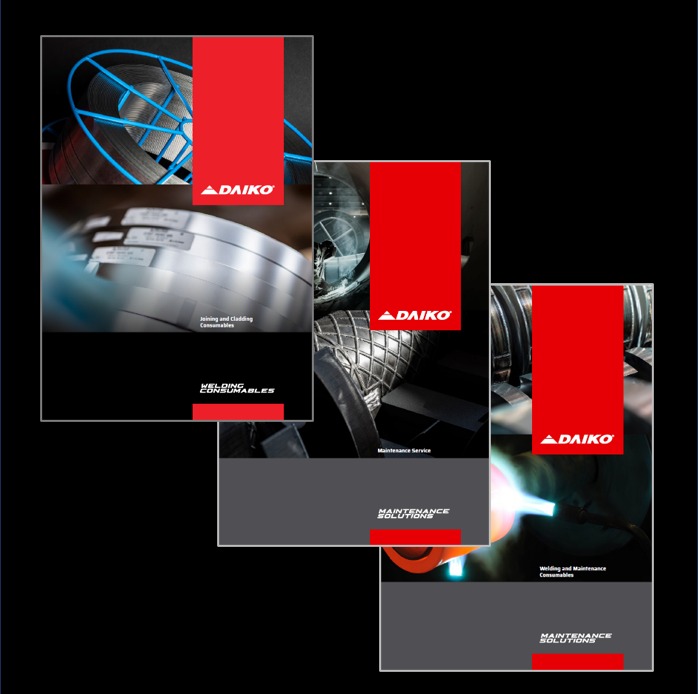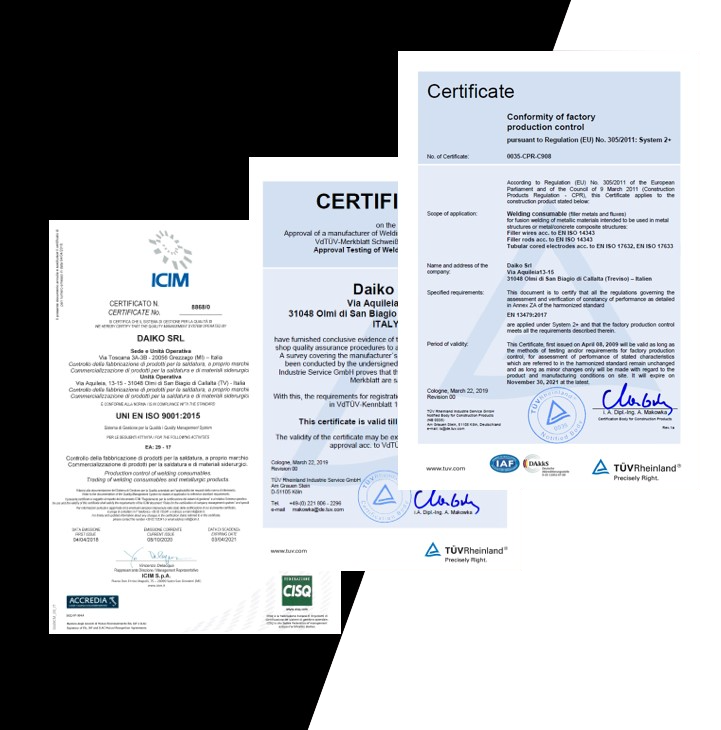- Home
- >
- All DAIKO products
- >
- TITANIUM ALLOYS
- >
- Gr. 2
Gr. 2
Application
It is a GTAW and GMAW filler metal used for welding commercial pure titanium alloys commonly found in applications requiring high temperature resistance and resistance to chemical reagents. Although there are four grades of Commercial Pure Titanium filler metals, C.P. Grade 2 (ERTi-2) is the most popular because of its good balance of strength, formability and weldability. The most common application of Commercial Pure Titanium is the aircraft industry, where tensile strength and weight ratios are so critical. Other uses would include cryogenic and petrochemical applications such as chemical process heat exchangers, pressure vessels and piping systems, pulp bleaching systems, electro chemical and chemical storage tanks. Compared to the other grades of commercially pure titanium, Grade 2 is slightly weaker than Grade 3, but stronger than Grade 1 and equally resistant to corrosion. Grade 2 offers excellent balance of moderate strength and reasonable ductility. This material is also non-magnetic.
Alloy Type
Gr. 2 titanium, commercially pure.
Microstructure
Pure alpha alloys (compact hexagonal lattice-HCP).
Materials
Suitable for welding Titanium grade 1, 2, 3 and 4.
EN W.Nr.: 3.7025, 3.7035, 3.7055, 3.7065.
ASTM: Ti-Gr 1, Ti-Gr 2, Ti-Gr 3, Ti-Gr 4.
UNS: R504007, R50400, R50550, R50700.
EN W.Nr.: 3.7025, 3.7035, 3.7055, 3.7065.
ASTM: Ti-Gr 1, Ti-Gr 2, Ti-Gr 3, Ti-Gr 4.
UNS: R504007, R50400, R50550, R50700.
Welding & PWHT
Titanium, being a reactive metal, is susceptible to embrittlement by oxygen, nitrogen, and hydrogen at elevated temperatures. As a result, safeguarding the metal from atmospheric contamination becomes crucial. This protection is achieved by shielding the metal with welding-grade inert gas. Throughout arc welding, it is imperative to maintain this shielding until the titanium has cooled below about 430°C. To ensure optimal welding conditions, the titanium metal itself must be free of thick oxide and undergo thorough chemical cleaning Prior to welding initiation. Contamination from oxide, water, grease, or dirt can also lead to embrittlement. For titanium welding rods, ensure they're clean and free of heavy oxide, moisture, grease, and dirt. Cleaning between passes is usually unnecessary if the weld bead stays bright and silvery. Discoloration like straw or light blue can be removed with a stainless steel wire brush. However, contaminated weld beads with dark blue, gray, or white powdery discoloration must be completely ground off. The joint requires meticulous preparation and cleaning before proceeding with additional welding.
Products of the line Gr. 2
| Product name | Process | AWS specifications | EN ISO specifications | |
| DAIKOWT Ti 2 | GTAW |
AWS A5.16
ERTi-2 |
- | |
| DAIKOWM Ti 2 | GMAW |
AWS A5.16
ERTi-2 |
- |


